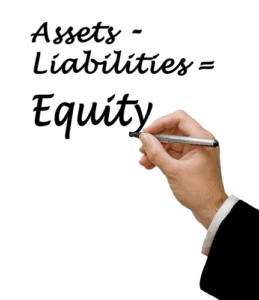Radio Gaushala 93.6 MHz , २ पटक हेरिएको

The P&L is a financial snapshot of a business’s income and expenses over time. It shows a business has consistently generated profits and retained a good portion of those earnings. It also indicates that a company has more Accounts Payable Management funds to reinvest back into the future growth of the business. Retained earnings are also known as accumulated earnings, earned surplus, undistributed profits, or retained income. Whether appropriated or unappropriated, retained earnings play a vital role in a company’s statements. Additionally, the information about the company’s dividend policy can be used by investors to make informed decisions about investing in the company.
What Are the Common Mistakes to Avoid When Preparing a Statement of Retained Earnings?


The dividends are the amount which has been declared for the year not the amount paid during the year. According to the provisions in the loan agreement, retained earnings available for dividends are limited to $20,000. Even though some refer to retained earnings appropriations as retained earnings reserves, using the term reserves is discouraged. You can determine quite a lot about management, their growth plans, and how shareholder-friendly they are. We can see how Wells Fargo intends to give back to its shareholders via dividends or buybacks.
Statement of Retained Earnings: What is it? How to Prepare It, and Examples

The statement of retained earnings plays a crucial role in financial reporting by showing how a company’s retained earnings account has changed over a year’s statement. This separate statement is also called a statement of owner’s equity and is essential in determining the amount of earnings that can be CARES Act distributed to shareholders as dividends. By analyzing the retained earnings figure, investors can gain insight into how well a company is performing and how much it is reinvesting back into the business. The retained earnings calculation can be found by starting with the accumulated earnings from previous years and adding or subtracting the change in retained earnings. In some cases, a company may have negative retained earnings, which could affect the retained earnings available for distribution to shareholders. In these instances, a company may need to adjust its retained earnings example to ensure it is in compliance with financial reporting standards.

What is the retained earnings formula?
The retained earnings formula is essential for companies to manage their financial resources. Retained earnings can be used for various purposes, including reinvesting in the business, paying down debt, or distributing dividends to shareholders in the future. By retaining earnings, a company can increase its financial stability and improve its long-term prospects for growth. This information is vital for understanding the company’s tax liability and making informed decisions about tax planning. Another way the statement of retained earnings relates to accounting is by providing information about dividend payments. Companies typically pay dividends to shareholders as a way of distributing profits and rewarding investors.
- The beginning retained earnings is derived from the balance sheet of the previous accounting period while the Net income is derived from the income statement.
- Below is a break down of subject weightings in the FMVA® financial analyst program.
- For IFRS companies, each account from the equity section of the SFP is to be reported in the statement of changes in equity.
- If this loss is greater than the amount of profits previously recorded as retained earnings, then it is considered to be negative retained earnings.
- The difference in retained earnings is $50,000, meaning the company’s retained earnings increased by $50,000 from the previous fiscal year.

This financial document tracks changes in retained earnings over time, providing insights into your company’s profitability and decisions regarding profit distribution. By revealing whether a company can grow using its own steam or if it might stumble into financial distress, the statement acts to build or diminish market and shareholder confidence. Within a company, these numbers illustrate management’s prowess in using profits effectively and deciding on dividend distributions.
- The retained earnings ending balance is one of the elements of shareholders’ equity.
- The statement is also instrumental in financial transparency and accountability.
- Accounting standards like GAAP and IFRS require transparent disclosure of adjustments to retained earnings, whether due to prior period errors or policy changes.
- With a more secure, easy-to-use platform and an average Pro experience of 12 years, there’s no beating Taxfyle.
- After all, it strikes a balance between rewarding shareholders and funding future business prospects.
- Clear disclosure of these adjustments in financial statement notes provides stakeholders with context and justification.
Restated Balance

Let’s face it—managing finances isn’t always the most exciting part of running your business. But as an entrepreneur, startup founder, or small business owner, clarity around statment of retained earnings your company’s financial health is essential. A critical part of this clarity comes from understanding your company’s statement of retained earnings.
- For example, Wells Fargo has requirements concerning its capital allocation.
- Therefore, it’s essential to integrate analysis from the statement of retained earnings into broader financial planning discussions within your business strategy.
- Prior adjustments imply that something was done incorrectly, reports were misstated, or an error occurred.
- “They wanted a loan, but they were showing consecutive losses and were in a deficit position,” she says.
- As we can tell from this small sample size, Apple appears to continue growing its return on its retained earnings.
The statement of retained earnings also provides information about the company’s capital structure. You can find the amount on the balance sheet under shareholders’ equity for the previous accounting period. During the accounting period, the company generates a net income of $50,000 and pays cash dividends of $20,000, leaving it with $30,000 of its net income remaining. Like I earlier said, always take note of the dates and also take note of the type of shares that is receiving the dividends.
प्रकाशित मिति: २०२४-०७-०१ , समय : १७:११:२० , १ वर्ष अगाडि
